Assignment Model | Linear Programming Problem (LPP) | Introduction
What is assignment model.
→ Assignment model is a special application of Linear Programming Problem (LPP) , in which the main objective is to assign the work or task to a group of individuals such that;
i) There is only one assignment.
ii) All the assignments should be done in such a way that the overall cost is minimized (or profit is maximized, incase of maximization).
→ In assignment problem, the cost of performing each task by each individual is known. → It is desired to find out the best assignments, such that overall cost of assigning the work is minimized.

For example:
Suppose there are 'n' tasks, which are required to be performed using 'n' resources.
The cost of performing each task by each resource is also known (shown in cells of matrix)
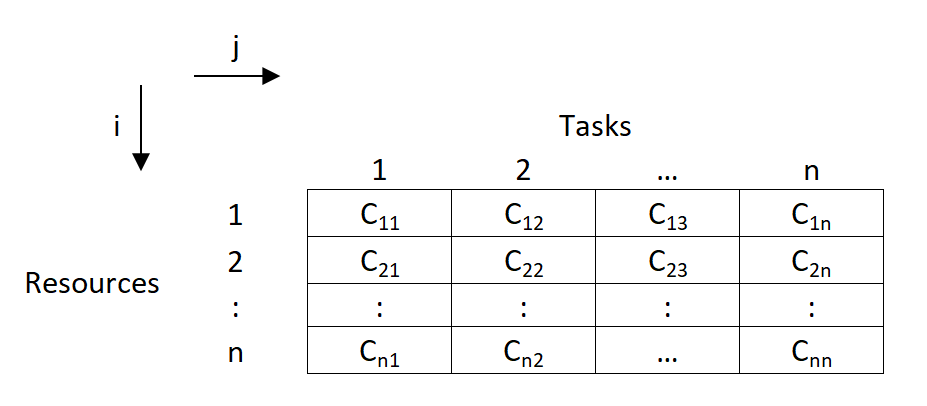
- In the above asignment problem, we have to provide assignments such that there is one to one assignments and the overall cost is minimized.
How Assignment Problem is related to LPP? OR Write mathematical formulation of Assignment Model.
→ Assignment Model is a special application of Linear Programming (LP).
→ The mathematical formulation for Assignment Model is given below:
→ Let, C i j \text {C}_{ij} C ij denotes the cost of resources 'i' to the task 'j' ; such that

→ Now assignment problems are of the Minimization type. So, our objective function is to minimize the overall cost.
→ Subjected to constraint;
(i) For all j t h j^{th} j t h task, only one i t h i^{th} i t h resource is possible:
(ii) For all i t h i^{th} i t h resource, there is only one j t h j^{th} j t h task possible;
(iii) x i j x_{ij} x ij is '0' or '1'.
Types of Assignment Problem:
(i) balanced assignment problem.
- It consist of a suqare matrix (n x n).
- Number of rows = Number of columns
(ii) Unbalanced Assignment Problem
- It consist of a Non-square matrix.
- Number of rows ≠ \not= = Number of columns
Methods to solve Assignment Model:
(i) integer programming method:.
In assignment problem, either allocation is done to the cell or not.
So this can be formulated using 0 or 1 integer.
While using this method, we will have n x n decision varables, and n+n equalities.
So even for 4 x 4 matrix problem, it will have 16 decision variables and 8 equalities.
So this method becomes very lengthy and difficult to solve.
(ii) Transportation Methods:
As assignment problem is a special case of transportation problem, it can also be solved using transportation methods.
In transportation methods ( NWCM , LCM & VAM), the total number of allocations will be (m+n-1) and the solution is known as non-degenerated. (For eg: for 3 x 3 matrix, there will be 3+3-1 = 5 allocations)
But, here in assignment problems, the matrix is a square matrix (m=n).
So total allocations should be (n+n-1), i.e. for 3 x 3 matrix, it should be (3+3-1) = 5
But, we know that in 3 x 3 assignment problem, maximum possible possible assignments are 3 only.
So, if are we will use transportation methods, then the solution will be degenerated as it does not satisfy the condition of (m+n-1) allocations.
So, the method becomes lengthy and time consuming.
(iii) Enumeration Method:
It is a simple trail and error type method.
Consider a 3 x 3 assignment problem. Here the assignments are done randomly and the total cost is found out.
For 3 x 3 matrix, the total possible trails are 3! So total 3! = 3 x 2 x 1 = 6 trails are possible.
The assignments which gives minimum cost is selected as optimal solution.
But, such trail and error becomes very difficult and lengthy.
If there are more number of rows and columns, ( For eg: For 6 x 6 matrix, there will be 6! trails. So 6! = 6 x 5 x 4 x 3 x 2 x 1 = 720 trails possible) then such methods can't be applied for solving assignments problems.
(iv) Hungarian Method:
It was developed by two mathematicians of Hungary. So, it is known as Hungarian Method.
It is also know as Reduced matrix method or Flood's technique.
There are two main conditions for applying Hungarian Method:
(1) Square Matrix (n x n). (2) Problem should be of minimization type.
Suggested Notes:
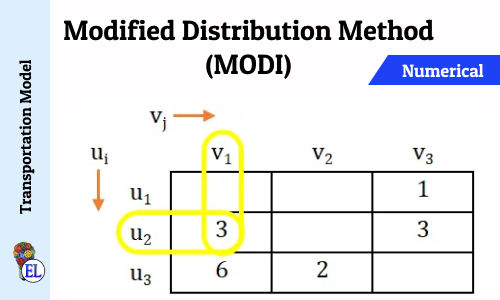
Modified Distribution Method (MODI) | Transportation Problem | Transportation Model

Stepping Stone | Transportation Problem | Transportation Model
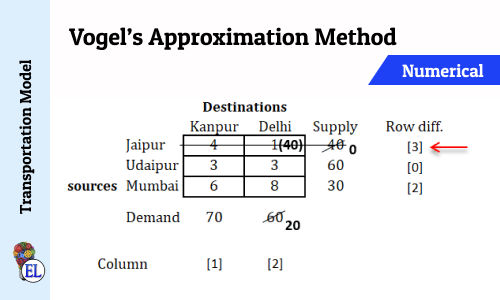
Vogel’s Approximation Method (VAM) | Method to Solve Transportation Problem | Transportation Model
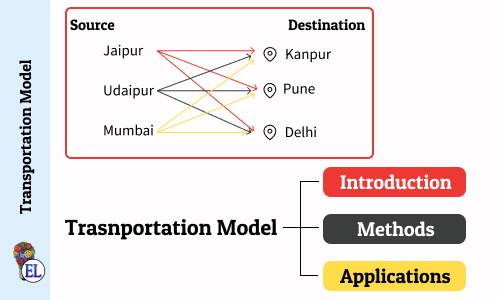
Transportation Model - Introduction
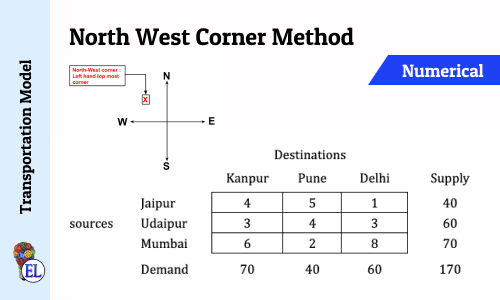
North West Corner Method | Method to Solve Transportation Problem | Transportation Model
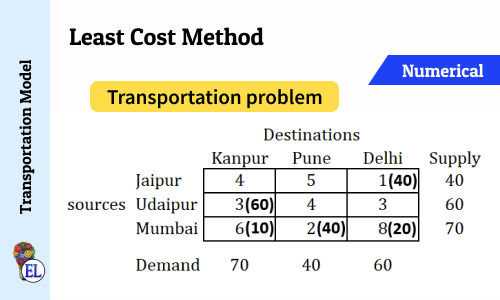
Least Cost Method | Method to Solve Transportation Problem | Transportation Model
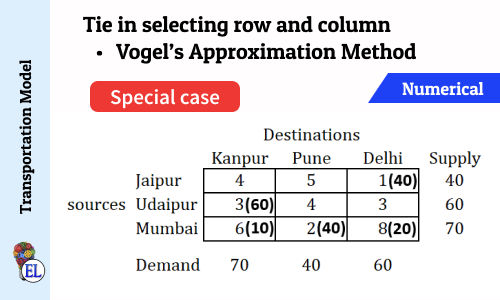
Tie in selecting row and column (Vogel's Approximation Method - VAM) | Numerical | Solving Transportation Problem | Transportation Model
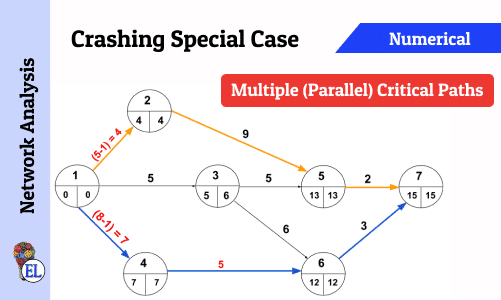
Crashing Special Case - Multiple (Parallel) Critical Paths
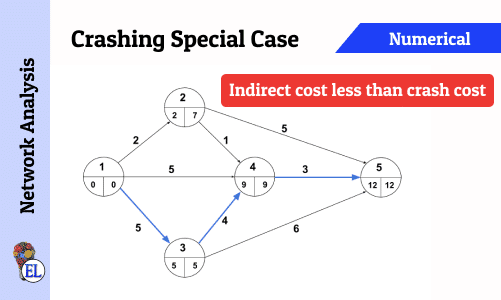
Crashing Special Case - Indirect cost less than Crash Cost
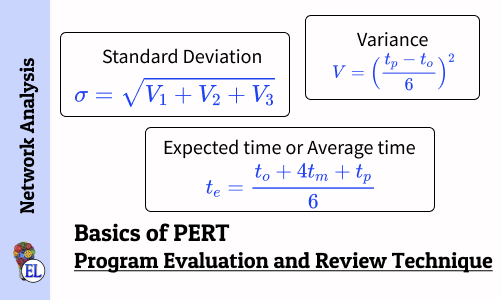
Basics of Program Evaluation and Review Technique (PERT)
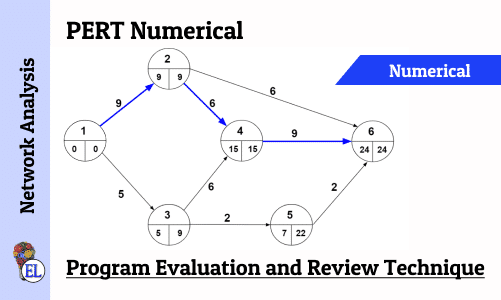
Numerical on PERT (Program Evaluation and Review Technique)

Network Analysis - Dealing with Network Construction Basics
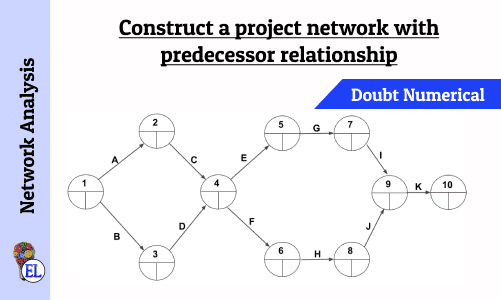
Construct a project network with predecessor relationship | Operation Research | Numerical

Graphical Method | Methods to solve LPP | Linear Programming
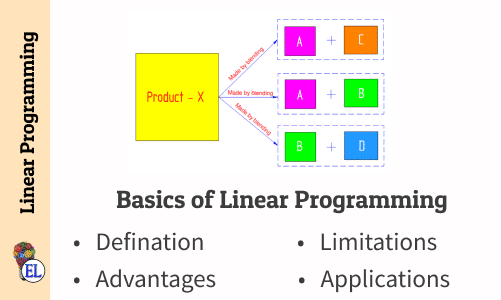
Basics of Linear Programming
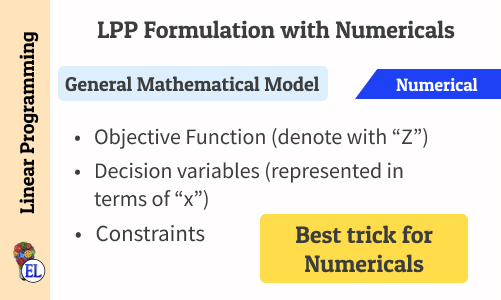
Linear Programming Problem (LPP) Formulation with Numericals

All comments that you add will await moderation. We'll publish all comments that are topic related, and adhere to our Code of Conduct .
Want to tell us something privately? Contact Us
Post comment

Education Lessons
Stay in touch, [notes] operation research, [notes] dynamics of machinery, [notes] maths, [notes] science, [notes] computer aided design.
- MapReduce Algorithm
- Linear Programming using Pyomo
- Networking and Professional Development for Machine Learning Careers in the USA
- Predicting Employee Churn in Python
- Airflow Operators

Solving Assignment Problem using Linear Programming in Python
Learn how to use Python PuLP to solve Assignment problems using Linear Programming.
In earlier articles, we have seen various applications of Linear programming such as transportation, transshipment problem, Cargo Loading problem, and shift-scheduling problem. Now In this tutorial, we will focus on another model that comes under the class of linear programming model known as the Assignment problem. Its objective function is similar to transportation problems. Here we minimize the objective function time or cost of manufacturing the products by allocating one job to one machine.
If we want to solve the maximization problem assignment problem then we subtract all the elements of the matrix from the highest element in the matrix or multiply the entire matrix by –1 and continue with the procedure. For solving the assignment problem, we use the Assignment technique or Hungarian method, or Flood’s technique.
The transportation problem is a special case of the linear programming model and the assignment problem is a special case of transportation problem, therefore it is also a special case of the linear programming problem.
In this tutorial, we are going to cover the following topics:
Assignment Problem
A problem that requires pairing two sets of items given a set of paired costs or profit in such a way that the total cost of the pairings is minimized or maximized. The assignment problem is a special case of linear programming.
For example, an operation manager needs to assign four jobs to four machines. The project manager needs to assign four projects to four staff members. Similarly, the marketing manager needs to assign the 4 salespersons to 4 territories. The manager’s goal is to minimize the total time or cost.
Problem Formulation
A manager has prepared a table that shows the cost of performing each of four jobs by each of four employees. The manager has stated his goal is to develop a set of job assignments that will minimize the total cost of getting all 4 jobs.

Initialize LP Model
In this step, we will import all the classes and functions of pulp module and create a Minimization LP problem using LpProblem class.
Define Decision Variable
In this step, we will define the decision variables. In our problem, we have two variable lists: workers and jobs. Let’s create them using LpVariable.dicts() class. LpVariable.dicts() used with Python’s list comprehension. LpVariable.dicts() will take the following four values:
- First, prefix name of what this variable represents.
- Second is the list of all the variables.
- Third is the lower bound on this variable.
- Fourth variable is the upper bound.
- Fourth is essentially the type of data (discrete or continuous). The options for the fourth parameter are LpContinuous or LpInteger .
Let’s first create a list route for the route between warehouse and project site and create the decision variables using LpVariable.dicts() the method.
Define Objective Function
In this step, we will define the minimum objective function by adding it to the LpProblem object. lpSum(vector)is used here to define multiple linear expressions. It also used list comprehension to add multiple variables.
Define the Constraints
Here, we are adding two types of constraints: Each job can be assigned to only one employee constraint and Each employee can be assigned to only one job. We have added the 2 constraints defined in the problem by adding them to the LpProblem object.
Solve Model
In this step, we will solve the LP problem by calling solve() method. We can print the final value by using the following for loop.
From the above results, we can infer that Worker-1 will be assigned to Job-1, Worker-2 will be assigned to job-3, Worker-3 will be assigned to Job-2, and Worker-4 will assign with job-4.
In this article, we have learned about Assignment problems, Problem Formulation, and implementation using the python PuLp library. We have solved the Assignment problem using a Linear programming problem in Python. Of course, this is just a simple case study, we can add more constraints to it and make it more complicated. You can also run other case studies on Cargo Loading problems , Staff scheduling problems . In upcoming articles, we will write more on different optimization problems such as transshipment problem, balanced diet problem. You can revise the basics of mathematical concepts in this article and learn about Linear Programming in this article .
- Solving Blending Problem in Python using Gurobi
- Transshipment Problem in Python Using PuLP
You May Also Like

Solving Balanced Diet Problem in Python using PuLP


Working with Pandas Date and Time
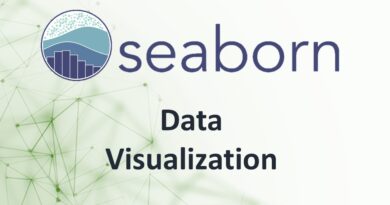
Data Visualization using Seaborn

www.springer.com The European Mathematical Society
- StatProb Collection
- Recent changes
- Current events
- Random page
- Project talk
- Request account
- What links here
- Related changes
- Special pages
- Printable version
- Permanent link
- Page information
- View source
Assignment problem
The problem of optimally assigning $ m $ individuals to $ m $ jobs. It can be formulated as a linear programming problem that is a special case of the transport problem :
maximize $ \sum _ {i,j } c _ {ij } x _ {ij } $
$$ \sum _ { j } x _ {ij } = a _ {i} , i = 1 \dots m $$
(origins or supply),
$$ \sum _ { i } x _ {ij } = b _ {j} , j = 1 \dots n $$
(destinations or demand), where $ x _ {ij } \geq 0 $ and $ \sum a _ {i} = \sum b _ {j} $, which is called the balance condition. The assignment problem arises when $ m = n $ and all $ a _ {i} $ and $ b _ {j} $ are $ 1 $.
If all $ a _ {i} $ and $ b _ {j} $ in the transposed problem are integers, then there is an optimal solution for which all $ x _ {ij } $ are integers (Dantzig's theorem on integral solutions of the transport problem).
In the assignment problem, for such a solution $ x _ {ij } $ is either zero or one; $ x _ {ij } = 1 $ means that person $ i $ is assigned to job $ j $; the weight $ c _ {ij } $ is the utility of person $ i $ assigned to job $ j $.
The special structure of the transport problem and the assignment problem makes it possible to use algorithms that are more efficient than the simplex method . Some of these use the Hungarian method (see, e.g., [a5] , [a1] , Chapt. 7), which is based on the König–Egervary theorem (see König theorem ), the method of potentials (see [a1] , [a2] ), the out-of-kilter algorithm (see, e.g., [a3] ) or the transportation simplex method.
In turn, the transportation problem is a special case of the network optimization problem.
A totally different assignment problem is the pole assignment problem in control theory.
- This page was last edited on 5 April 2020, at 18:48.
- Privacy policy
- About Encyclopedia of Mathematics
- Disclaimers
- Impressum-Legal
Your Article Library
Assignment problem in linear programming : introduction and assignment model.
ADVERTISEMENTS:
Assignment problem is a special type of linear programming problem which deals with the allocation of the various resources to the various activities on one to one basis. It does it in such a way that the cost or time involved in the process is minimum and profit or sale is maximum. Though there problems can be solved by simplex method or by transportation method but assignment model gives a simpler approach for these problems.
In a factory, a supervisor may have six workers available and six jobs to fire. He will have to take decision regarding which job should be given to which worker. Problem forms one to one basis. This is an assignment problem.
1. Assignment Model :
Suppose there are n facilitates and n jobs it is clear that in this case, there will be n assignments. Each facility or say worker can perform each job, one at a time. But there should be certain procedure by which assignment should be made so that the profit is maximized or the cost or time is minimized.
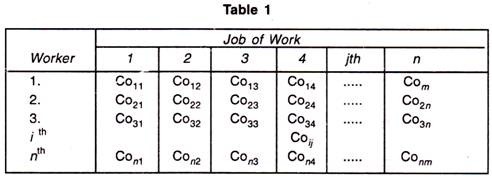
In the table, Co ij is defined as the cost when j th job is assigned to i th worker. It maybe noted here that this is a special case of transportation problem when the number of rows is equal to number of columns.
Mathematical Formulation:
Any basic feasible solution of an Assignment problem consists (2n – 1) variables of which the (n – 1) variables are zero, n is number of jobs or number of facilities. Due to this high degeneracy, if we solve the problem by usual transportation method, it will be a complex and time consuming work. Thus a separate technique is derived for it. Before going to the absolute method it is very important to formulate the problem.
Suppose x jj is a variable which is defined as
1 if the i th job is assigned to j th machine or facility
0 if the i th job is not assigned to j th machine or facility.
Now as the problem forms one to one basis or one job is to be assigned to one facility or machine.

The total assignment cost will be given by

The above definition can be developed into mathematical model as follows:
Determine x ij > 0 (i, j = 1,2, 3…n) in order to
Subjected to constraints

and x ij is either zero or one.
Method to solve Problem (Hungarian Technique):
Consider the objective function of minimization type. Following steps are involved in solving this Assignment problem,
1. Locate the smallest cost element in each row of the given cost table starting with the first row. Now, this smallest element is subtracted form each element of that row. So, we will be getting at least one zero in each row of this new table.
2. Having constructed the table (as by step-1) take the columns of the table. Starting from first column locate the smallest cost element in each column. Now subtract this smallest element from each element of that column. Having performed the step 1 and step 2, we will be getting at least one zero in each column in the reduced cost table.
3. Now, the assignments are made for the reduced table in following manner.
(i) Rows are examined successively, until the row with exactly single (one) zero is found. Assignment is made to this single zero by putting square □ around it and in the corresponding column, all other zeros are crossed out (x) because these will not be used to make any other assignment in this column. Step is conducted for each row.
(ii) Step 3 (i) in now performed on the columns as follow:- columns are examined successively till a column with exactly one zero is found. Now , assignment is made to this single zero by putting the square around it and at the same time, all other zeros in the corresponding rows are crossed out (x) step is conducted for each column.
(iii) Step 3, (i) and 3 (ii) are repeated till all the zeros are either marked or crossed out. Now, if the number of marked zeros or the assignments made are equal to number of rows or columns, optimum solution has been achieved. There will be exactly single assignment in each or columns without any assignment. In this case, we will go to step 4.
4. At this stage, draw the minimum number of lines (horizontal and vertical) necessary to cover all zeros in the matrix obtained in step 3, Following procedure is adopted:
(iii) Now tick mark all the rows that are not already marked and that have assignment in the marked columns.
(iv) All the steps i.e. (4(i), 4(ii), 4(iii) are repeated until no more rows or columns can be marked.
(v) Now draw straight lines which pass through all the un marked rows and marked columns. It can also be noticed that in an n x n matrix, always less than ‘n’ lines will cover all the zeros if there is no solution among them.
5. In step 4, if the number of lines drawn are equal to n or the number of rows, then it is the optimum solution if not, then go to step 6.
6. Select the smallest element among all the uncovered elements. Now, this element is subtracted from all the uncovered elements and added to the element which lies at the intersection of two lines. This is the matrix for fresh assignments.
7. Repeat the procedure from step (3) until the number of assignments becomes equal to the number of rows or number of columns.
Related Articles:
- Two Phase Methods of Problem Solving in Linear Programming: First and Second Phase
- Linear Programming: Applications, Definitions and Problems
No comments yet.
Leave a reply click here to cancel reply..
You must be logged in to post a comment.
Assignment Problem: Linear Programming
The assignment problem is a special type of transportation problem , where the objective is to minimize the cost or time of completing a number of jobs by a number of persons.
In other words, when the problem involves the allocation of n different facilities to n different tasks, it is often termed as an assignment problem.
The model's primary usefulness is for planning. The assignment problem also encompasses an important sub-class of so-called shortest- (or longest-) route models. The assignment model is useful in solving problems such as, assignment of machines to jobs, assignment of salesmen to sales territories, travelling salesman problem, etc.
It may be noted that with n facilities and n jobs, there are n! possible assignments. One way of finding an optimal assignment is to write all the n! possible arrangements, evaluate their total cost, and select the assignment with minimum cost. But, due to heavy computational burden this method is not suitable. This chapter concentrates on an efficient method for solving assignment problems that was developed by a Hungarian mathematician D.Konig.
"A mathematician is a device for turning coffee into theorems." -Paul Erdos
Formulation of an assignment problem
Suppose a company has n persons of different capacities available for performing each different job in the concern, and there are the same number of jobs of different types. One person can be given one and only one job. The objective of this assignment problem is to assign n persons to n jobs, so as to minimize the total assignment cost. The cost matrix for this problem is given below:
The structure of an assignment problem is identical to that of a transportation problem.
To formulate the assignment problem in mathematical programming terms , we define the activity variables as
for i = 1, 2, ..., n and j = 1, 2, ..., n
In the above table, c ij is the cost of performing jth job by ith worker.
Generalized Form of an Assignment Problem
The optimization model is
Minimize c 11 x 11 + c 12 x 12 + ------- + c nn x nn
subject to x i1 + x i2 +..........+ x in = 1 i = 1, 2,......., n x 1j + x 2j +..........+ x nj = 1 j = 1, 2,......., n
x ij = 0 or 1
In Σ Sigma notation
x ij = 0 or 1 for all i and j
An assignment problem can be solved by transportation methods, but due to high degree of degeneracy the usual computational techniques of a transportation problem become very inefficient. Therefore, a special method is available for solving such type of problems in a more efficient way.
Assumptions in Assignment Problem
- Number of jobs is equal to the number of machines or persons.
- Each man or machine is assigned only one job.
- Each man or machine is independently capable of handling any job to be done.
- Assigning criteria is clearly specified (minimizing cost or maximizing profit).
Share this article with your friends
Operations Research Simplified Back Next
Goal programming Linear programming Simplex Method Transportation Problem
Generalized Assignment Problem
- Reference work entry
- pp 1153–1162
- Cite this reference work entry

- O. Erhun Kundakcioglu 3 &
- Saed Alizamir 3
2856 Accesses
15 Citations
Article Outline
Introduction
Multiple-Resource Generalized Assignment Problem
Multilevel Generalized Assignment Problem
Dynamic Generalized Assignment Problem
Bottleneck Generalized Assignment Problem
Generalized Assignment Problem with Special Ordered Set
Stochastic Generalized Assignment Problem
Bi-Objective Generalized Assignment Problem
Generalized Multi-Assignment Problem
Exact Algorithms
Heuristics
Conclusions
This is a preview of subscription content, log in via an institution to check access.
Access this chapter
- Available as PDF
- Read on any device
- Instant download
- Own it forever
- Durable hardcover edition
- Dispatched in 3 to 5 business days
- Free shipping worldwide - see info
Tax calculation will be finalised at checkout
Purchases are for personal use only
Institutional subscriptions
Similar content being viewed by others

Some results on an assignment problem variant
Combinatorial clustering: literature review, methods, examples.

Introduction to Optimisation
Albareda-Sambola M, van der Vlerk MH, Fernandez E (2006) Exact solutions to a class of stochastic generalized assignment problems. Eur J Oper Res 173:465–487
Article MATH Google Scholar
Amini MM, Racer M (1994) A rigorous computational comparison of alternative solution methods for the generalized assignment problem. Manag Sci 40(7):868–890
Amini MM, Racer M (1995) A hybrid heuristic for the generalized assignment problem. Eur J Oper Res 87(2):343–348
Asahiro Y, Ishibashi M, Yamashita M (2003) Independent and cooperative parallel search methods for the generalized assignment problem. Optim Method Softw 18:129–141
Article MathSciNet MATH Google Scholar
Balachandran V (1976) An integer generalized transportation model for optimal job assignment in computer networks. Oper Res 24(4):742–759
Barnhart C, Johnson EL, Nemhauser GL, Savelsbergh MWP, Vance PH (1998) Branch-and-price: column generation for solving huge integer programs. Oper Res 46(3):316–329
Beasley JE (1993) Lagrangean heuristics for location problems. Eur J Oper Res 65:383–399
Cario MC, Clifford JJ, Hill RR, Yang J, Yang K, Reilly CH (2002) An investigation of the relationship between problem characteristics and algorithm performance: a case study of the gap. IIE Trans 34:297–313
Google Scholar
Cattrysse DG, Salomon M, Van LN Wassenhove (1994) A set partitioning heuristic for the generalized assignment problem. Eur J Oper Res 72:167–174
Cattrysse DG, Van LN Wassenhove (1992) A survey of algorithms for the generalized assignment problem. Eur J Oper Res 60:260–272
Ceselli A, Righini G (2006) A branch-and-price algorithm for the multilevel generalized assignment problem. Oper Res 54:1172–1184
Chalmet L, Gelders L (1976) Lagrangean relaxation for a generalized assignment type problem. In: Advances in OR. EURO, North Holland, Amsterdam, pp 103–109
Chu EC, Beasley JE (1997) A genetic algorithm for the generalized assignment problem. Comput Oper Res 24:17–23
Cohen R, Katzir L, Raz D (2006) An efficient approximation for the generalized assignment problem. Inf Process Lett 100:162–166
de Farias Jr, Johnson EL, Nemhauser GL (2000) A generalized assignment problem with special ordered sets: a polyhedral approach. Math Program, Ser A 89:187–203
de Farias Jr, Nemhauser GL (2001) A family of inequalities for the generalized assignment polytope. Oper Res Lett 29:49–55
DeMaio A, Roveda C (1971) An all zero-one algorithm for a class of transportation problems. Oper Res 19:1406–1418
Diaz JA, Fernandez E (2001) A tabu search heuristic for the generalized assignment problem. Eur J Oper Res 132:22–38
Drexl A (1991) Scheduling of project networks by job assignment. Manag Sci 37:1590–1602
Dyer M, Frieze A (1992) Probabilistic analysis of the generalised assignment problem. Math Program 55:169–181
Article MathSciNet Google Scholar
Feltl H, Raidl GR (2004) An improved hybrid genetic algorithm for the generalized assignment problem. In: SAC '04; Proceedings of the 2004 ACM symposium on Applied computing. ACM Press, New York, pp 990–995
Chapter Google Scholar
Fisher ML, Jaikumar R (1981) A generalized assignment heuristic for vehicle routing. Netw 11:109–124
Fisher ML, Jaikumar R, van Wassenhove LN (1986) A multiplier adjustment method for the generalized assignment problem. Manag Sci 32:1095–1103
Fleischer L, Goemans MX, Mirrokni VS, Sviridenko M (2006) Tight approximation algorithms for maximum general assignment problems. In SODA '06: Proceedings of the seventeenth annual ACM-SIAM symposium on Discrete algorithm. ACM Press, New York, pp 611–620
Book Google Scholar
Freling R, Romeijn HE, Morales DR, Wagelmans APM (2003) A branch-and-price algorithm for the multiperiod single-sourcing problem. Oper Res 51(6):922–939
French AP, Wilson JM (2002) Heuristic solution methods for the multilevel generalized assignment problem. J Heuristics 8:143–153
French AP, Wilson JM (2007) An lp-based heuristic procedure for the generalized assignment problem with special ordered sets. Comput Oper Res 34:2359–2369
Garey MR, Johnson DS (1990) Computers and Intractability; A Guide to the Theory of NP-Completeness. Freeman, New York
Gavish B, Pirkul H (1991) Algorithms for the multi-resource generalized assignment problem. Manag Sci 37:695–713
Geoffrion AM, Graves GW (1974) Multicommodity distribution system design by benders decomposition. Manag Sci 20(5):822–844
Glover F, Hultz J, Klingman D (1979) Improved computer based planning techniques, part ii. Interfaces 4:17–24
Gottlieb ES, Rao MR (1990) \( (1,k) \) -configuration facets for the generalized assignment problem. Math Program 46(1):53–60
Gottlieb ES, Rao MR (1990) The generalized assignment problem: Valid inequalities and facets. Math Stat 46:31–52
MathSciNet MATH Google Scholar
Guignard M, Rosenwein MB (1989) An improved dual based algorithm for the generalized assignment problem. Oper Res 37(4):658–663
Haddadi S (1999) Lagrangian decomposition based heuristic for the generalized assignment problem. Inf Syst Oper Res 37:392–402
Haddadi S, Ouzia H (2004) Effective algorithm and heuristic for the generalized assignment problem. Eur J Oper Res 153:184–190
Hajri-Gabouj S (2003) A fuzzy genetic multiobjective optimization algorithm for a multilevel generalized assignment problem. IEEE Trans Syst 33:214–224
Janak SL, Taylor MS, Floudas CA, Burka M, Mountziaris TJ (2006) Novel and effective integer optimization approach for the nsf panel-assignment problem: a multiresource and preference-constrained generalized assignment problem. Ind Eng Chem Res 45:258–265
Article Google Scholar
Jörnsten K, Nasberg M (1986) A new lagrangian relaxation approach to the generalized assignment problem. Eur J Oper Res 27:313–323
Jörnsten KO, Varbrand P (1990) Relaxation techniques and valid inequalities applied to the generalized assignment problem. Asia-P J Oper Res 7(2):172–189
Klastorin TD (1979) An effective subgradient algorithm for the generalized assignment problem. Comp Oper Res 6:155–164
Klastorin TD (1979) On the maximal covering location problem and the generalized assignment problem. Manag Sci 25(1):107–112
Kogan K, Khmelnitsky E, Ibaraki T (2005) Dynamic generalized assignment problems with stochastic demands and multiple agent task relationships. J Glob Optim 31:17–43
Kogan K, Shtub A, Levit VE (1997) Dgap – the dynamic generalized assignment problem. Ann Oper Res 69:227–239
Kuhn H (1995) A heuristic algorithm for the loading problem in flexible manufacturing systems. Int J Flex Manuf Syst 7:229–254
Laguna M, Kelly JP, Gonzfilez-Velarde JL, Glover F (1995) Tabu search for the multilevel generalized assignment problem. Eur J Oper Res 82:176–189
Lawler E (1976) Combinatorial Optimization: Networks and Matroids. Holt, Rinehart, Winston, New York
MATH Google Scholar
Lin BMT, Huang YS, Yu HK (2001) On the variable-depth-search heuristic for the linear-cost generalized assignment problem. Int J Comput Math 77:535–544
Lorena LAN, Narciso MG (1996) Relaxation heuristics for a generalized assignment problem. Eur J Oper Res 91:600–610
Lorena LAN, Narciso MG, Beasley JE (2003) A constructive genetic algorithm for the generalized assignment problem. J Evol Optim
Lourenço HR, Serra D (1998) Adaptive approach heuristics for the generalized assignment problem. Technical Report 288, Department of Economics and Business, Universitat Pompeu Fabra, Barcelona
Lourenço HR, Serra D (2002) Adaptive search heuristics for the generalized assignment problem. Mathw Soft Comput 9(2–3):209–234
Martello S, Toth P (1981) An algorithm for the generalized assignment problem. In: Brans JP (ed) Operational Research '81, 9th IFORS Conference, North-Holland, Amsterdam, pp 589–603
Martello S, Toth P (1990) Knapsack Problems: Algorithms and Computer Implementations. Wiley, New York
Martello S, Toth P (1992) Generalized assignment problems. Lect Notes Comput Sci 650:351–369
MathSciNet Google Scholar
Martello S, Toth P (1995) The bottleneck generalized assignment problem. Eur J Oper Res 83:621–638
Mazzola JB, Neebe AW (1988) Bottleneck generalized assignment problems. Eng Costs Prod Econ 14(1):61–65
Mazzola JB, Wilcox SP (2001) Heuristics for the multi-resource generalized assignment problem. Nav Res Logist 48(6):468–483
Monfared MAS, Etemadi M (2006) The impact of energy function structure on solving generalized assignment problem using hopfield neural network. Eur J Oper Res 168:645–654
Morales DR, Romeijn HE (2005) Handbook of Combinatorial Optimization, supplement vol B. In: Du D-Z, Pardalos PM (eds) The Generalized Assignment Problem and extensions. Springer, New York, pp 259–311
Narciso MG, Lorena LAN (1999) Lagrangean/surrogate relaxation for generalized assignment problems. Eur J Oper Res 114:165–177
Nauss RM (2003) Solving the generalized assignment problem: an optimizing and heuristic approach. INFORMS J Comput 15(3):249–266
Nauss RM (2005) The elastic generalized assignment problem. J Oper Res Soc 55:1333–1341
Nowakovski J, Schwarzler W, Triesch E (1999) Using the generalized assignment problem in scheduling the rosat space telescope. Eur J Oper Res 112:531–541
Nutov Z, Beniaminy I, Yuster R (2006) A \( (1-1/e) \) ‐approximation algorithm for the generalized assignment problem. Oper Res Lett 34:283–288
Park JS, Lim BH, Lee Y (1998) A lagrangian dual-based branch-and-bound algorithm for the generalized multi-assignment problem. Manag Sci 44(12S):271–275
Pigatti A, de Aragao MP, Uchoa E (2005) Stabilized branch-and-cut-and-price for the generalized assignment problem. In: Electronic Notes in Discrete Mathematics, vol 19 of 2nd Brazilian Symposium on Graphs, Algorithms and Combinatorics, pp 385–395,
Osman IH (1995) Heuristics for the generalized assignment problem: simulated annealing and tabu search approaches. OR-Spektrum 17:211–225
Racer M, Amini MM (1994) A robust heuristic for the generalized assignment problem. Ann Oper Res 50(1):487–503
Romeijn HE, Morales DR (2000) A class of greedy algorithms for the generalized assignment problem. Discret Appl Math 103:209–235
Romeijn HE, Morales DR (2001) Generating experimental data for the generalized assignment problem. Oper Res 49(6):866–878
Romeijn HE, Piersma N (2000) A probabilistic feasibility and value analysis of the generalized assignment problem. J Comb Optim 4:325–355
Ronen D (1992) Allocation of trips to trucks operating from a single terminal. Comput Oper Res 19(5):445–451
Ross GT, Soland RM (1975) A branch and bound algorithm for the generalized assignment problem. Math Program 8:91–103
Ross GT, Soland RM (1977) Modeling facility location problems as generalized assignment problems. Manag Sci 24:345–357
Ross GT, Zoltners AA (1979) Weighted assignment models and their application. Manag Sci 25(7):683–696
Savelsbergh M (1997) A branch-and-price algorithm for the generalized assignment problem. Oper Res 45:831–841
Shmoys DB, Tardos E (1993) An approximation algorithm for the generalized assignment problem. Math Program 62:461–474
Shtub A (1989) Modelling group technology cell formation as a generalized assignment problem. Int J Prod Res 27:775–782
Srinivasan V, Thompson GL (1973) An algorithm for assigning uses to sources in a special class of transportation problems. Oper Res 21(1):284–295
Stützle T, Hoos H (1999) The Max-Min Ant System and Local Search for Combinatorial Optimization Problems. In: Voss S, Martello S, Osman IH, Roucairol C (eds) Meta-heuristics; Advances and trends in local search paradigms for optimization. Kluwer, Boston, pp 313–329
Toktas B, Yen JW, Zabinsky ZB (2006) Addressing capacity uncertainty in resource-constrained assignment problems. Comput Oper Res 33:724–745
Trick M (1992) A linear relaxation heuristic for the generalized assignment problem. Nav Res Logist 39:137–151
Trick MA (1994) Scheduling multiple variable-speed machines. Oper Res 42(2):234–248
Wilson JM (1997) A genetic algorithm for the generalised assignment problem. J Oper Res Soc 48:804–809
Wilson JM (2005) An algorithm for the generalized assignment problem with special ordered sets. J Heuristics 11:337–350
Yagiura M, Ibaraki T, Glover F (2004) An ejection chain approach for the generalized assignment problem. INFORMS J Comput 16:133–151
Yagiura M, Ibaraki T, Glover F (2006) A path relinking approach with ejection chains for the generalized assignment problem. Eur J Oper Res 169:548–569
Yagiura M, Yamaguchi T, Ibaraki T (1998) A variable depth search algorithm with branching search for the generalized assignment problem. Optim Method Softw 10:419–441
Yagiura M, Yamaguchi T, Ibaraki T (1999) A variable depth search algorithm for the generalized assignment problem. In: Voss S, Martello S, Osman IH, Roucairol C (eds) Meta-heuristics; Advances and Trends in Local Search paradigms for Optimization, Kluwer, Boston, pp 459–471
Zhang CW, Ong HL (2007) An efficient solution to biobjective generalized assignment problem. Adv Eng Softw 38:50–58
Zimokha VA, Rubinshtein MI (1988) R & d planning and the generalized assignment problem. Autom Remote Control 49:484–492
Download references
Author information
Authors and affiliations.
Department of Industrial and Systems Engineering, University of Florida, Gainesville, USA
O. Erhun Kundakcioglu & Saed Alizamir
You can also search for this author in PubMed Google Scholar
Editor information
Editors and affiliations.
Department of Chemical Engineering, Princeton University, Princeton, NJ, 08544-5263, USA
Christodoulos A. Floudas
Center for Applied Optimization, Department of Industrial and Systems Engineering, University of Florida, Gainesville, FL, 32611-6595, USA
Panos M. Pardalos
Rights and permissions
Reprints and permissions
Copyright information
© 2008 Springer-Verlag
About this entry
Cite this entry.
Kundakcioglu, O.E., Alizamir, S. (2008). Generalized Assignment Problem . In: Floudas, C., Pardalos, P. (eds) Encyclopedia of Optimization. Springer, Boston, MA. https://doi.org/10.1007/978-0-387-74759-0_200
Download citation
DOI : https://doi.org/10.1007/978-0-387-74759-0_200
Publisher Name : Springer, Boston, MA
Print ISBN : 978-0-387-74758-3
Online ISBN : 978-0-387-74759-0
eBook Packages : Mathematics and Statistics Reference Module Computer Science and Engineering
Share this entry
Anyone you share the following link with will be able to read this content:
Sorry, a shareable link is not currently available for this article.
Provided by the Springer Nature SharedIt content-sharing initiative
- Publish with us
Policies and ethics
- Find a journal
- Track your research
The Assignment Model
The linear programming formulation of the assignment model is similar to the formulation of the transportation model, except all the supply values for each source equal one, and all the demand values at each destination equal one. Thus, our example is formulated as follows :
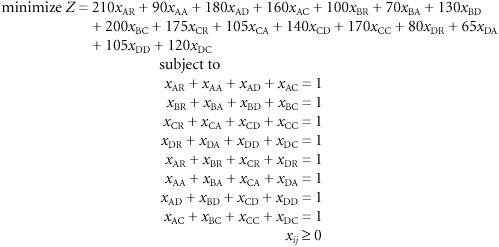
This is a balanced assignment model. An unbalanced model exists when supply exceeds demand or demand exceeds supply.
- Welcome to DarkBASIC
- Making Programs Think Branching Statements and Subroutines
- Adding Sound Effects to Your Game
- Playing Intro Movies and Cut-Scenes
- Fundamentals of 3D Graphics Programming
- Playing with Relations
- Obtaining Query Count Without EXECUTE-ing a Query
- Creating a Customized Sign-on Form
- Does Subclassing Exhibit Intelligence?
- Intelligence with Regard to Form Wizards
- Introduction to Visual Basic .NET
- Working with VB .NET
- Basics of the .NET Framework
- Your First Program
- Power Management for the Tablet PC
- Delegating Thread Safety
- Handling Abnormal Thread Termination
- Extending ThreadPoolExecutor
- Other Forms of Single-threaded Subsystems
- Performance and Scalability
- Supporting IPv6 Traffic Transport in MPLS Layer 3 VPNs Using 6VPE
- Understanding IKE in an IPsec Remote Access VPN Environment
- Deploying IPsec Remote Access VPNs Using Preshared Key and Digital Signature Authentication
- Strengthening SSL Remote Access VPNs Security by Implementing Cisco Secure Desktop
- Understanding IPLS
- The Outlook Object Model
- WSH Language Elements
- VBScript with Internet Explorer
- WSC Programming Topics
Quantitative Techniques: Theory and Problems by P. C. Tulsian, Vishal Pandey
Get full access to Quantitative Techniques: Theory and Problems and 60K+ other titles, with a free 10-day trial of O'Reilly.
There are also live events, courses curated by job role, and more.
WHAT IS ASSIGNMENT PROBLEM
Assignment Problem is a special type of linear programming problem where the objective is to minimise the cost or time of completing a number of jobs by a number of persons.
The assignment problem in the general form can be stated as follows:
“Given n facilities, n jobs and the effectiveness of each facility for each job, the problem is to assign each facility to one and only one job in such a way that the measure of effectiveness is optimised (Maximised or Minimised).”
Several problems of management has a structure identical with the assignment problem.
Example I A manager has four persons (i.e. facilities) available for four separate jobs (i.e. jobs) and the cost of assigning (i.e. effectiveness) each job to each ...
Get Quantitative Techniques: Theory and Problems now with the O’Reilly learning platform.
O’Reilly members experience books, live events, courses curated by job role, and more from O’Reilly and nearly 200 top publishers.
Don’t leave empty-handed
Get Mark Richards’s Software Architecture Patterns ebook to better understand how to design components—and how they should interact.
It’s yours, free.

Check it out now on O’Reilly
Dive in for free with a 10-day trial of the O’Reilly learning platform—then explore all the other resources our members count on to build skills and solve problems every day.

MBA Knowledge Base
Business • Management • Technology
Home » Management Science » Transportation and Assignment Models in Operations Research
Transportation and Assignment Models in Operations Research
Transportation and assignment models are special purpose algorithms of the linear programming. The simplex method of Linear Programming Problems(LPP) proves to be inefficient is certain situations like determining optimum assignment of jobs to persons, supply of materials from several supply points to several destinations and the like. More effective solution models have been evolved and these are called assignment and transportation models.
The transportation model is concerned with selecting the routes between supply and demand points in order to minimize costs of transportation subject to constraints of supply at any supply point and demand at any demand point. Assume a company has 4 manufacturing plants with different capacity levels, and 5 regional distribution centres. 4 x 5 = 20 routes are possible. Given the transportation costs per load of each of 20 routes between the manufacturing (supply) plants and the regional distribution (demand) centres, and supply and demand constraints, how many loads can be transported through different routes so as to minimize transportation costs? The answer to this question is obtained easily through the transportation algorithm.
Similarly, how are we to assign different jobs to different persons/machines, given cost of job completion for each pair of job machine/person? The objective is minimizing total cost. This is best solved through assignment algorithm.
Uses of Transportation and Assignment Models in Decision Making
The broad purposes of Transportation and Assignment models in LPP are just mentioned above. Now we have just enumerated the different situations where we can make use of these models.
Transportation model is used in the following:
- To decide the transportation of new materials from various centres to different manufacturing plants. In the case of multi-plant company this is highly useful.
- To decide the transportation of finished goods from different manufacturing plants to the different distribution centres. For a multi-plant-multi-market company this is useful.
- To decide the transportation of finished goods from different manufacturing plants to the different distribution centres. For a multi-plant-multi-market company this is useful. These two are the uses of transportation model. The objective is minimizing transportation cost.
Assignment model is used in the following:
- To decide the assignment of jobs to persons/machines, the assignment model is used.
- To decide the route a traveling executive has to adopt (dealing with the order inn which he/she has to visit different places).
- To decide the order in which different activities performed on one and the same facility be taken up.
In the case of transportation model, the supply quantity may be less or more than the demand. Similarly the assignment model, the number of jobs may be equal to, less or more than the number of machines/persons available. In all these cases the simplex method of LPP can be adopted, but transportation and assignment models are more effective, less time consuming and easier than the LPP.
Related posts:
- Operations Research approach of problem solving
- Introduction to Transportation Problem
- Procedure for finding an optimum solution for transportation problem
- Initial basic feasible solution of a transportation problem
- Top 7 Best Ways of Getting MBA Assignment Writing Help
- Introduction to Decision Models
- Transportation Cost Elements
- Modes of Transportation in Logistics
- Factors Affecting Transportation in Logistics
- Export/Import Transportation Systems
One thought on “ Transportation and Assignment Models in Operations Research ”
Exclussive dff. And easy understude
Leave a Reply Cancel reply
Your email address will not be published. Required fields are marked *

Snapsolve any problem by taking a picture. Try it in the Numerade app?

IMAGES
VIDEO
COMMENTS
A special case of the transportation problem is the assignment problem, which occurs when each supply is 1 and each demand is 1. In this case, the integrality implies that every supplier will be assigned one destination and every destination will have one supplier. The costs give the basis for assigning a supplier and destination to each other.
Assignment model is a special application of Linear Programming Problem (LPP), in which the main objective is to assign the work or task to a group of individuals such that; i) There is only one assignment ... As assignment problem is a special case of transportation problem, it can also be solved using transportation methods. In transportation ...
The assignment problem is a special case of the transportation problem, which is a special case of the minimum cost flow problem, which in turn is a special case of a linear program. While it is possible to solve any of these problems using the simplex algorithm , each specialization has a smaller solution space and thus more efficient ...
Assignment Problem. A problem that requires pairing two sets of items given a set of paired costs or profit in such a way that the total cost of the pairings is minimized or maximized. The assignment problem is a special case of linear programming. For example, an operation manager needs to assign four jobs to four machines.
The Assignment Model The assignment model is a special case of the transportation model Workers represent sources Jobs represent destinations Supply at each source = 1 Demand at each destination = 1 The cost of transporting each worker is c ij As all supplies and demands are 1, can be
Assignment problem. The problem of optimally assigning $ m $ individuals to $ m $ jobs. It can be formulated as a linear programming problem that is a special case of the transport problem : maximize $ \sum _ {i,j } c _ {ij } x _ {ij } $. subject to. $$ \sum _ { j } x _ {ij } = a _ {i} , i = 1 \dots m $$. (origins or supply),
Assignment Problem. The assignment problem is a special case of linear programming problem; it is one of the fundamental combinational optimization problems in the branch of optimization or operations research in mathematics. Its goal consists in assigning m resources (usually workers) to n tasks (usually jobs) one a one to one basis while ...
Assignment problem is a special type of linear programming problem which deals with the allocation of the various resources to the various activities on one to one basis. It does it in such a way that the cost or time involved in the process is minimum and profit or sale is maximum. Though there problems can be solved by simplex method or by ...
The assignment problem is a special type of transportation problem, where the objective is to minimize the cost or time of completing a number of jobs by a number of persons.. In other words, when the problem involves the allocation of n different facilities to n different tasks, it is often termed as an assignment problem.
Multiple-Resource Generalized Assignment Problem. Proposed by Gavish and Pirkul [], multi-resource generalized assignment problem (MRGAP) is a special case of the multi-resource weighted assignment model that is previously studied by Ross and Zoltners [].In MRGAP a set of tasks has to be assigned to a set of agents in a way that permits assignment of multiple tasks to an agent subject to a set ...
The assignment model is a special case of the (a) maximum-flow model (b) transportation model (c) shortest-route model (d) none of the above models. Jason Gerber Numerade Educator 02:40. Problem 10 An assignment problem is a special form of transportation problem where all supply and demand values equal ...
The assignment model is a special form of a linear programming model that is similar to the transportation model. There are differences, however. In the assignment model, the supply at each source and the demand at each destination are each limited to one unit. An assignment model is for a special form of transportation problem in which all ...
5.1 TRANSPORTATION MODELS. The transportation model is a special class of linear programming that deals with shipping a commodity from sources/origins (e.g Factory) to Destinations (e.g Warehouses). Each origin represents a source of supply for the commodity; each destination represents a point of Demand for the commodity.
Week_10: The Assignment Model. 2. 1. Assignment model The assignment model is a special case of transportation problems where each supply point should be assigned to a demand point and each demand should be met. It is actually a special case of the transportation model in which the workers represent the sources, and the jobs represent the ...
The Assignment Problem is a special type of Linear Programming Problem based on the following assumptions: However, solving this task for increasing number of jobs and/or resources calls for…
Assignment Problem is a special type of linear programming problem where the objective is to minimise the cost or time of completing a number of jobs by a number of persons. The assignment problem in the general form can be stated as follows: "Given n facilities, n jobs and the effectiveness of each facility for each job, the problem is to ...
Matrix model of the assignment problem. The network model is in Fig. 13. It is very similar to the transportation model except the external flows are all +1 or -1. The only relevant parameter for the assignment model is arc cost (not shown in the figure for clarity) ; all other parameters should be set to default values.
The assignment model is actually a special case of the transportation model in which the workers represent the sources and the jobs represent the destinations. The supply amount at each source and the demand amount at each destination exactly equal 1. C11 C12 ----- C1n C21 C22 ----- C2n
LP problems, the number of routes (or, in this case, assignments) must equal the number of sources or sites (in this case, workers) plus the number of destinations (in this case, jobs) minus one; is, Assignments = Workers + Jobs - 1; that is, Assignments = 6. - 1. We can see that for our problem, we have six nonempty cells.
Transportation and assignment models are special purpose algorithms of the linear programming. The simplex method of Linear Programming Problems(LPP) proves to be inefficient is certain situations like determining optimum assignment of jobs to persons, supply of materials from several supply points to several destinations and the like. More effective solution models have been evolved and these ...
The assignment model is a special case of the (a) maximum-flow model (b) transportation model (c) shortest-route model (d) none of the above models. Submitted by Christine W. Oct. 12, 2021 05:53 p.m. Instant Answer. EXPERT VERIFIED. Step 1/4 The assignment model is a type of linear programming model used to assign tasks or resources to agents ...
Introduction Assignment model is a special case of transportation model. In assignment problem, you can only assign one person to a project and vice versa. This is also called one-to-one assignment.You will consider a problem where any of the three drivers are assigned to any of the four long distance routes with their own buses. You will present the objective function which is to minimize the ...
Answer: The assignment model is a special case of the transportation problems model. Explanation: The assignment model is a subset of transportation problems in which each supply point is assigned to a demand point and each demand is met. It is actually a subset of the transportation model, with workers representing the sources and jobs ...
GPT-4o is available now in Azure OpenAI Service API and Azure AI Studio with support for text and image. GPT-4o is our first model offered both with a Global and Regional deployment. Pricing is $5/1M tokens for input and $15.00/1M tokens for output. Pricing is subject to change starting 5/24.
The introduction of TimeGEN-1 into Azure AI marks a significant enhancement in how businesses can harness advanced AI for time series forecasting. This integration is built on several key pillars that ensure both robust functionality and adherence to best practices in AI deployment: Enhanced Security and Compliance: Azure AI prioritizes the ...